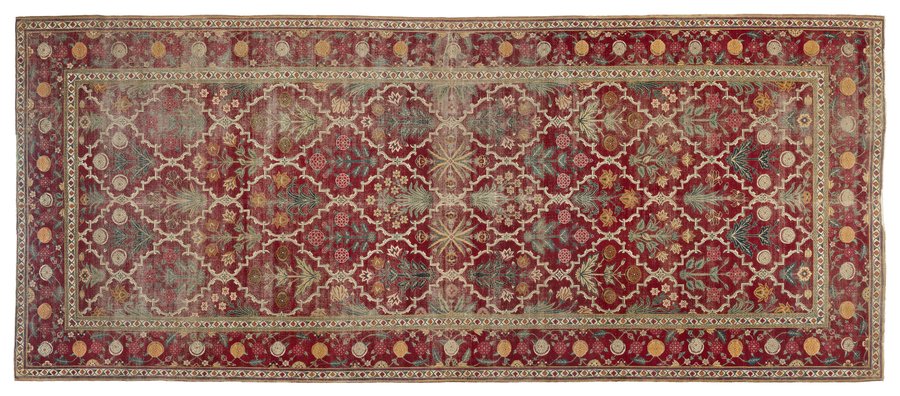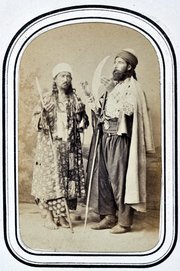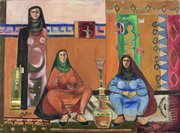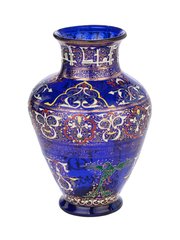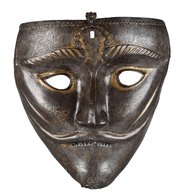
Carpet
Museum of Islamic Art
- Title:
- Carpet
- Production place:
- Lahore
- Date:
- 1650 - 1725
- Period:
- Mughal
- Title:
- Carpet
- Production place:
- Lahore
- Date:
- 1650 - 1725
- Period:
- Mughal
- Material:
- Wool, Cotton
- Technique:
- Weaving
- Dimensions:
- 580.5 × 246
This large woven wool on cotton carpet is decorated with a rich array of symmetrically arranged flowers, including lilies, peonies and rosettes, set within a lattice framework against a deep madder red ground. The pattern is strictly symmetrical, meaning, if folded in half each pattern would mirror the other; the carpet could therefore be appreciated in equal measure from all angles. Rather interestingly, the horizontal axe of symmetry in the centre of the carpet is decorated with a four flower bouquet, while each of the other lattice frames are filled with either a three or five flower spray stemming from a single vegetal tuft. Flowers arranged in such a manner – in single, stylized sprays - reached their apogee during the reign of Mughal emperor Shah Jahan (r. 1038-68 AH / 1628-58 CE). At this time, in the mid 11th century AH / mid-17th century CE, many Persian weavers had settled in northern India where they found patronage in the imperial ateliers of the Mughals. Royal weaving workshops were known to have been established in Kashmir and Lahore (modern day Pakistan), where this Mughal carpet was most likely made.
